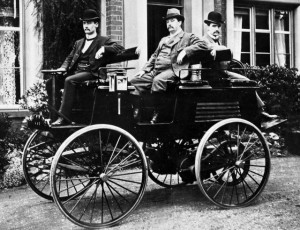Terminology for Battery Electric Marine Systems
Each discipline has its own language and terminology and it can make for hard work trying to have a conversation with someone in a completely different field of work – just try having a serious discussion with nuclear physicist or an astronomer.
This Tech Note explores the terminology that is arriving into the marine sector as battery electric motors start replacing diesel engines. Many will be familiar with this but it is worth going through the process.
One of the most fundamental units of measure of power has been the horsepower (hp). The origins of this term are self evident, and as the various engine technologies transitioned through steam to internal combustion engines the term was simply retained as a well understood unit of measure.
As electric starters and batteries replaced the crank handle on engines, the unit of measure of electrical requirement became the Amp (A) as this was an important measure of energy when it came to starting an often stubborn engine on a cold morning. Logically then, battery storage capacity was measured in Amp/hr (Ah) as this was a unit of measurement that was useful in determining capacity of a battery to support the cranking of a cold, stubborn engine, and it naturally followed that the term for the generator/alternator output, was also measured as current flow in Amps.
These units of measure have certainly endured the test of time, however the transition from fossil fuel engines to electric motors as the primary propulsion power source, will bring with it some new units of measurement.
Becoming familiar with the terminology that is rapidly approaching with the suite of battery electric technologies will be essential as these technologies continue to grow, with more and more of our technologies becoming electrified with batteries, the obvious being electric vehicles, and battery storage in all it’s forms.
Whilst there was a time when electric vehicles actually outnumbered fossil fueled vehicles, the ‘battery electric’ revolution as we now know it, is a relatively new phenomena, made possible, largely, by the higher energy density of lithium cells and the increased efficiencies and power from electric motors.
These new technologies bring together the battery and the motor into a new configuration, in which the battery becomes the fuel source for the motor, as well as the motor being capable of creating ‘fuel’ to recharge the battery through regenerative braking or hydro-generation.
Advancing the motor developments has increased efficiencies as well as tended to push voltages higher as motor manufacturers seek to squeeze more power from their motors without the associated heat generated from higher electrical currents.
In addition, these battery electric developments have also provided a platform that supports a suite of digital functionality that has substantially advanced and now sits nicely alongside battery electric systems.
It will be important to familiarise ourselves with these new units of measurement as using them incorrectly is easily done and completely changes the meaning of a discussion, which clearly has the potential for misunderstanding and confusion.
So… what does the new terminology for battery electric systems look like?
The unit of Power is the Watt (W) rather than the Horsepower (hp). Most familiar is the (now old) incandescent light bulb rated at 100 Watts, which is not a lot of energy when it comes to powering a boat.
When talking about motors though, a more useful measure is the kilowatt (1000 Watts). A kilowatt is roughly 1.3 hp, so if a common sized diesel engine was about 20 hp it’s equivalent would be around 15 kW (small k, big W) motor. Note that it is easy to convert kW to hp and these units are still often both included together.
In terms of units describing batteries which store energy, and like the A and Ah concept, battery capacity is measured in kilo Watt hours (kWh) (small k, big W, small h). Using this it is easy to see the relationship between the motor and the battery – a 15 kW motor operating at full power will require 30 kWh of energy to run for 2 hours.
The most common error in discussions is to refer to battery capacity, which should be in kWh, using the units of Power (kW), and vice versa.
Note that as we use these units we have not yet mentioned the voltage of the system. The voltage in this system could be 12 Volts (big V) or 600 Volts, but the units of Power (W) and Capacity (Wh) are not required to specify Voltage.
A 100Ah battery requires the additional information of the Voltage to describe the stored energy it contains.
Always remember that Power (W) = Volts (V) x Amps (A) and therefore it follows that a 100 Ah, 12 Volt battery (above) has a total capacity of 1200Wh, so in theory this amount of energy could run a 100W light bulb for 12 hours.
The battery capacity calculation above reveals the enormous amount of energy we utilise in our day to day activities, particularly when we consider that an electric vehicle motor might be in the order of around 150 kW (150,000W) of Power.
I have found the following useful;
1) A kW is a little more Power than hp, so you need less of them,
2) As a strict rule – use kW to describe motor Power and kWh to describe battery storage capacity. This will allow for an easy calculation of approximate hours of duration at FULL Power.
Tech Notes are a technical comment on a particular topic. Tech Notes are provided as guiding information only and are not to be relied upon as technical advice.
Please check our White Papers for more detailed information on this and related subjects.

